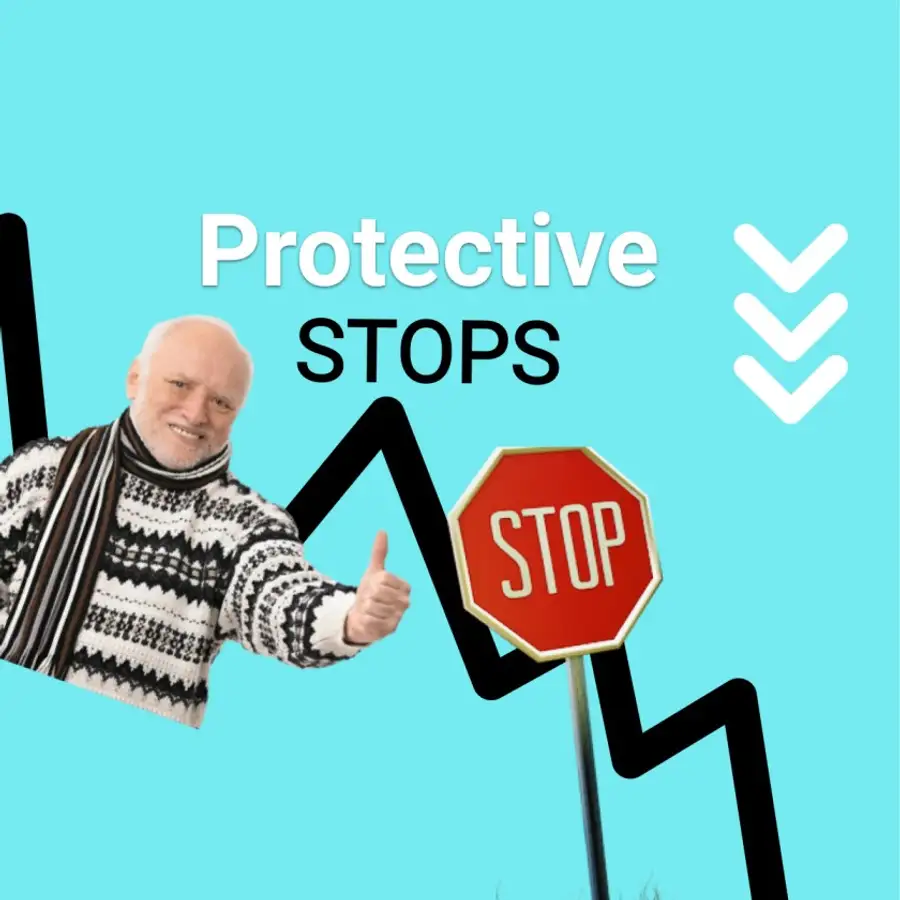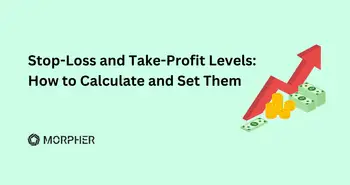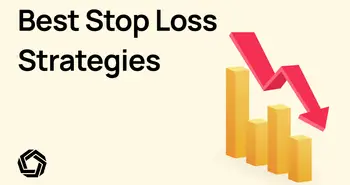5 Tips for Using Protective Stops: Stop Loss and Take Profit

At Morpher, we are glad to offer our traders stop-loss and take-profit level orders, also known as protective stops. Take-profit and stop-loss orders are an instrumental tool in any trader’s arsenal, especially when it comes to risk management.
Stop-loss and take-profit levels are orders that close the existing positions when the market passes a predetermined price threshold. If this is your first time learning about these two tools, we suggest you first check out our support documentation for stop-loss and take-profit and then come back to this article.
While the fundamentals behind stop-loss and take-profit levels are simple, if they’re used poorly, they can negatively impact your investment performance. We hope that the strategies and tips laid out below will give you a better understanding of how to use take-profit and stop-loss levels as a risk management tool more effectively.
1. Understand the Market You’re Trading
Not all markets are created equal; some are more volatile than others, and have different price-action profiles. Understanding the market that you’re trading, along with its expected trading range, will help you place your levels effectively. Keep in mind the trading hours and whether the market could gap up or down at Not all markets are created equal; some are more volatile than others and have different price-action profiles. Understanding the market that you’re trading, along with its expected trading range, will help you place your levels effectively. Keep in mind the trading hours and whether the market could gap up or down at its opening (such as with stocks or futures). Remember, a stop-loss or take-profit order is only triggered by the price threshold that you set; it doesn’t guarantee that your position is closed at the same price.
2. Set Time-Based Investment Expectations
One way to look at a take-profit level is to see it as a goal. If that’s how you look at your position, then you also need to take holding time into an account. Don’t just set an arbitrary profit level; think of the expected price-action and whether that’s a realistic expectation. If you’re trading foreign exchange pairs, setting your take-profit level 5% above the market may not be realistic if your expected investment horizon is only a few days. The same principle applies to setting stop-loss levels. Setting a stop-loss level far below market price may force you to remain in the trade for much longer. There’s nothing wrong with sitting on your positions, as long as it’s a productive wait, and you have enough capital to act on other signals.
3. Get Loose (But Not Too Loose)
A common mistake many traders make is setting their stop-loss too close to the market price. Your stop-loss might be triggered by a zero-momentum price change, which happens when the market dips for a second outside the scope of the current trend or true range and immediately rebounds. In this case, your stop loss is triggered even though there is no reversal in the price-action. The same can be said about setting take-profit levels too close to the market price. In some cases, your order might be triggered, but your position closes at a price that doesn’t even beat the spread. Your trade may need “breathing room”, and volatile markets breed a lot of noise that makes setting tight stops ineffective. You could be trading on very good ideas, while remaining too apprehensive with your stops to see any results.
4. Study Your Positions
Taking your take-profit and stop-loss levels into account, think about the risk/reward ratio of your position. If you’re a seasoned trader, you should have a solid understanding of your own risk aversion. If you don’t, this is a great way of getting to know yourself as an investor and trader. Do you find yourself expecting 20%+ returns per trade, but setting shallow stops? Where do you place your stop-loss usually? What trades keep you up at night?
It can be hard for some people to conceptualize risk-taking, but looking at your own history of stops can help you learn a lot about yourself. As a rule of thumb, if you’re setting stop-loss levels and are still nervous about your trades – you’re trading outside your risk tolerance.
5. Watch Out for Round Numbers
Technical traders will have heard of the term “round-number support”, which refers to price levels that garner a lot of trading volume especially around round numbers or integers. It’s a phenomenon where traders are more likely to buy or sell their investments when they’re trading at round numbers, partly due to the fact that they are memorable. If you buy a stock at $23 and you see it break $30, that’s a very memorable round number, and you may consider closing your position. Keep these levels in mind when setting take-profit and stop loss-levels. It’s very likely that other trades will buy or sell at these levels, putting your position at risk, as it may get executed at an undesirable price when it encounters resistance or support.
Bonus: Become a Master of Leverage
If you don’t understand how leverage works, then you’re not going to be able to use stop-loss and take-profit levels correctly, and, as a result, you may suffer losses. We strongly recommend all leverage traders to check out our guide on leveraged trading in order to fully understand the risks of high-leveraged trading. Don’t forget about the relationship between spreads and leverage, and how that will affect the execution price of your stop-loss or take-profit order. Moreover, remain mindful of the price at which your position could go bankrupt (your trade’s liquidation price), remember that your potential gains and losses are magnified when you trade using leverage.
Remember, take-profit and stop-loss levels are tools that have to be considered as part of your trading strategy or plan. Think about your expectations of the market, the risks you are prepared to take, and the losses that you are able to tolerate. For inexperienced traders, stop-losses are a great way of protecting themselves from the risks they don’t yet have a firm grasp of.

Disclaimer: All investments involve risk, and the past performance of a security, industry, sector, market, financial product, trading strategy, or individual’s trading does not guarantee future results or returns. Investors are fully responsible for any investment decisions they make. Such decisions should be based solely on an evaluation of their financial circumstances, investment objectives, risk tolerance, and liquidity needs. This post does not constitute investment advice.

Painless trading for everyone
Hundreds of markets all in one place - Apple, Bitcoin, Gold, Watches, NFTs, Sneakers and so much more.

Painless trading for everyone
Hundreds of markets all in one place - Apple, Bitcoin, Gold, Watches, NFTs, Sneakers and so much more.






